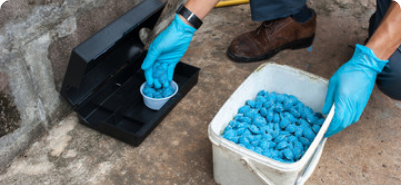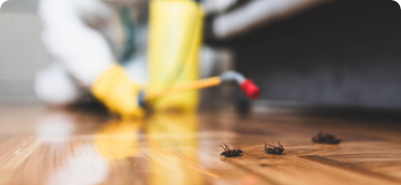Termite inspections in Sydney are crucial for commercial warehouses, especially in Sydney, where the climate encourages termite activity. These pests can severely damage wooden structures, resulting in expensive repairs and potential disruptions, making termite pest control essential. Regular termite inspections Sydney are vital for identifying and mitigating risks before they become serious issues.
Warehouses, often housing valuable inventory and equipment, are particularly susceptible to termite infestations. The vastness and complexity of these buildings can create hidden risk zones that are challenging to monitor without professional termite inspections in Sydney. Therefore, investing in comprehensive termite inspections Sydney is not just a precaution; it is essential for protecting assets and ensuring business continuity.
Understanding the Threat
Termites, often called “silent destroyers,” can chew through wood, flooring, and even wallpaper undetected. In a warehouse setting, wooden pallets, crates, and structural beams provide an ideal environment for these pests. The longer an infestation goes unnoticed, the more damage occurs, leading to increased repair costs and potential safety hazards for employees, making it crucial to prevent a termite attack.
Beyond physical damage, a termite infestation can harm a business’s reputation, especially if clients or partners become aware of the issue. Understanding the threat posed by termites is crucial for warehouse operators and owners. In addition to immediate financial implications, a reputation damaged by pest problems can lead to lost contracts and diminished customer trust, which can take years to rebuild.
Identifying Hidden Risk Zones
Commercial warehouses often have areas that are not easily accessible or visible, making it challenging to identify potential termite risk zones. These hidden areas can include storage spaces, behind walls, and under flooring. Professional termite inspections Sydney can help pinpoint these locations, ensuring that no potential infestation goes unnoticed.
Implementing termite barriers can also help in protecting these hidden areas from potential infestations.
Common hidden risk zones within warehouses include:
- Storage areas with wooden pallets and crates
- Moisture-prone regions, such as near plumbing or drainage systems
- Spaces with poor ventilation that can trap humidity
Additionally, the layout and design of a warehouse can inadvertently create additional risk zones. For instance, areas where wood meets concrete can often be overlooked, as they may appear structurally sound. The presence of old, unused equipment or furniture can also serve as a breeding ground for termites if not properly maintained or disposed of. Regular termite inspections Sydney not only help in identifying these hidden zones but also educate warehouse staff on best practices for minimizing risks, such as maintaining dry conditions and ensuring proper storage techniques.
Ultimately, a proactive approach to termite management can save warehouse operators significant time and resources. By implementing a routine termite inspections Sydney schedule, businesses can stay ahead of potential infestations, ensuring that their operations remain uninterrupted and their assets protected. This diligence fosters a safe working environment and reinforces a commitment to quality and reliability in the eyes of customers and stakeholders.
Importance of Annual Termite Inspection
Annual termite inspections are a cornerstone of effective termite control, especially in commercial warehouses where the stakes are high. These inspections are crucial for detecting termite infestations early, preventing costly damage, and ensuring the longevity of your property. Termites, particularly subterranean termites, can cause significant structural damage if left unchecked. Regular inspections can help identify early signs of termite activity, such as mud tubes, hollow-sounding wood, and termite droppings, allowing for timely intervention.
A comprehensive termite inspection not only identifies the presence of termites but also assesses the extent of the infestation. This information is vital for determining the most effective termite treatment plan. Regular termite inspections can also help prevent termite attacks, which can be devastating to properties. By scheduling annual termite inspections, warehouse operators can ensure that their facilities are protected from termite damage and infestations, safeguarding their investments and maintaining operational continuity.
The Process of a Professional Termite Inspection
Engaging a professional termite inspection service for termite inspections Sydney is crucial for accurately assessing the risk levels in a warehouse. The inspection process typically involves several key steps to ensure comprehensive coverage.
Initial Assessment
The first step in a professional termite inspection is an initial assessment of the property. Inspectors will also identify different termite species present, as each species may require a different treatment approach. This includes a visual inspection of the exterior and interior of the warehouse. Inspectors will look for signs of termite activity, such as mud tubes, discarded wings, and hollow-sounding wood. This preliminary evaluation helps determine the extent of the potential infestation and identifies areas that require further investigation.
Detailed Inspection
Following the initial assessment, a more detailed inspection is conducted. This may involve using specialized equipment, such as moisture meters and thermal imaging cameras, to detect hidden infestations. Inspectors will also examine areas that are typically overlooked, such as crawl spaces, attics, and subfloors.
This thorough inspection helps in determining the most effective termite treatments to address the infestation.
During this phase, the inspector will document any signs of termite activity and assess the overall condition of the warehouse. This thorough approach ensures that no potential risk zones are left unchecked.
Reporting and Recommendations
After completing the inspection, the pest control service will provide a detailed report outlining their findings. This report typically includes photographs, descriptions of any identified issues, and recommendations for treatment or preventative measures. The report may also suggest implementing a termite management system to provide ongoing protection against future infestations. Understanding the findings is crucial for warehouse owners, as it allows them to make informed decisions about how to proceed.
By following the recommendations provided in the report, businesses can take proactive steps to mitigate the risk of termite infestations and protect their assets.
Signs of Termite Infestation
Recognising the signs of a termite infestation and knowing how often to get termite treatment done is essential for effective termite control and prevention. Here are some common indicators that termites may be present in your warehouse:
- Mud Tubes: Termites construct mud tubes on exterior walls and floors to travel between their colony and food sources. These tubes are a clear sign of termite activity.
- Hollow-Sounding Wood: Termites consume wood from the inside out, leaving a thin veneer. Tapping on wood that sounds hollow can indicate termite damage.
- Termite Droppings (Frass): Drywood termites leave behind small, pellet-like droppings. Finding these around your property is a sign of an infestation.
- Discarded Termite Wings: After swarming, termites shed their wings. Piles of discarded wings near windows or doors can indicate a nearby colony.
- Swollen Timber or Wood: Termite activity can cause wood to swell, warp, or blister, often mistaken for water damage.
- Tunnels in Walls or Floors: Visible tunnels or galleries in wood structures are a direct sign of termite presence.
If you notice any of these signs, it’s essential to contact a termite control professional immediately. They can conduct a comprehensive termite inspection to determine the extent of the infestation and recommend the best course of treatment.
Preventative Measures to Consider
In addition to regular termite treatment in Sydney, implementing preventative measures can significantly reduce the risk of termite infestations in commercial warehouses. These measures are essential for creating an environment that is less conducive to termite activity.
Installing a termite barrier can also be an effective preventive measure to protect the warehouse from termite infestations.
Moisture Control
Termites thrive in moist environments, so controlling moisture levels within a warehouse is critical. This can be achieved by ensuring proper drainage around the building, fixing leaks promptly, and maintaining adequate ventilation. By minimising moisture, warehouse operators can deter termites from establishing a presence.
Regular Maintenance
Regular maintenance of the warehouse structure is also vital. This includes repairing any damaged wood, sealing cracks and crevices, and removing any wood debris or organic matter that may attract termites. By maintaining the integrity of the building, businesses can significantly reduce their vulnerability to infestations.
Barrier Treatments
Consideration should also be given to termite protection through barrier treatments. These chemical barriers can be applied around the perimeter of the warehouse to create a protective shield against termites. Engaging a professional pest control service to apply these treatments ensures that they are done correctly and effectively.
The Cost of Neglecting Termite Inspections
Neglecting termite inspections Sydney can lead to severe financial repercussions for commercial warehouses. The cost of repairing termite damage can be astronomical, often running into thousands of dollars. Ignoring the presence of active termites can lead to rapid and extensive damage, further escalating repair costs. Additionally, the disruption to business operations caused by an infestation can lead to lost revenue and decreased productivity.
Furthermore, if a warehouse is found to have a significant termite problem, it may face regulatory scrutiny or even legal action from clients or partners. The reputational damage associated with a termite infestation can be long-lasting and detrimental to a business’s success.
Long-Term Financial Implications of Termite Damage
Investing in regular termite inspections Sydney and preventative measures is a small price to pay compared to the potential costs of neglect. By addressing termite risks proactively, businesses can protect their assets and ensure long-term financial stability. This investment not only safeguards the physical structure of the warehouse but also the inventory and equipment housed within it.
Choosing the Right Pest Control Service
When it comes to termite inspections Sydney, selecting a reputable pest control service is essential. A qualified service provider will have the necessary experience and expertise to conduct thorough inspections and recommend appropriate treatments.
Qualifications and Experience
Look for pest control services that are licensed and insured, with a proven track record in termite inspections specifically for commercial properties. Reading reviews and testimonials from other businesses can provide valuable insights into the quality of service offered.
Comprehensive Services
Choose a pest control service that offers a comprehensive range of services, including inspections, treatments, and ongoing maintenance plans. This ensures that all aspects of termite management are covered, providing peace of mind for warehouse operators.
Commitment to Customer Service
Finally, consider the level of customer service provided by the pest control company. A responsive and knowledgeable team can make the inspection process smoother and more effective, ensuring that any concerns are addressed promptly and thoroughly.
Pre-Purchase Pest Control Inspections
For homebuyers and property investors, pre-purchase pest control inspections are an essential step in the buying process. These inspections can uncover potential termite infestations, damage, and other pest-related issues that could affect the property’s value and safety.
A comprehensive pre-purchase pest control inspection typically includes:
- Termite Inspection: Identifying signs of termite infestation and damage, ensuring that the property is free from these destructive pests.
- Pest Inspection: Checking for other common pests, such as rodents, cockroaches, and bed bugs, which can also impact the property’s condition and value.
- Building Inspection: Assessing the structural integrity of the property, identifying any damage or issues that may require attention.
By scheduling a pre-purchase pest control inspection, homebuyers and property investors can make informed decisions about their purchase. This proactive approach helps avoid costly surprises down the line and ensures that the property is a sound investment.
Conclusion
Termite inspections in Sydney are a critical component of maintaining the integrity of commercial warehouses in Sydney. By understanding the risks associated with termite infestations and taking proactive measures, businesses can protect their assets and ensure operational continuity. Regular inspections, moisture control, and engaging a reputable pest control service are all vital steps in safeguarding against these destructive pests.
Ultimately, the cost of neglecting termite inspections Sydney far outweighs the investment in preventative measures. By prioritizing termite management, warehouse operators can secure their business’s future and maintain a safe working environment for their employees.






